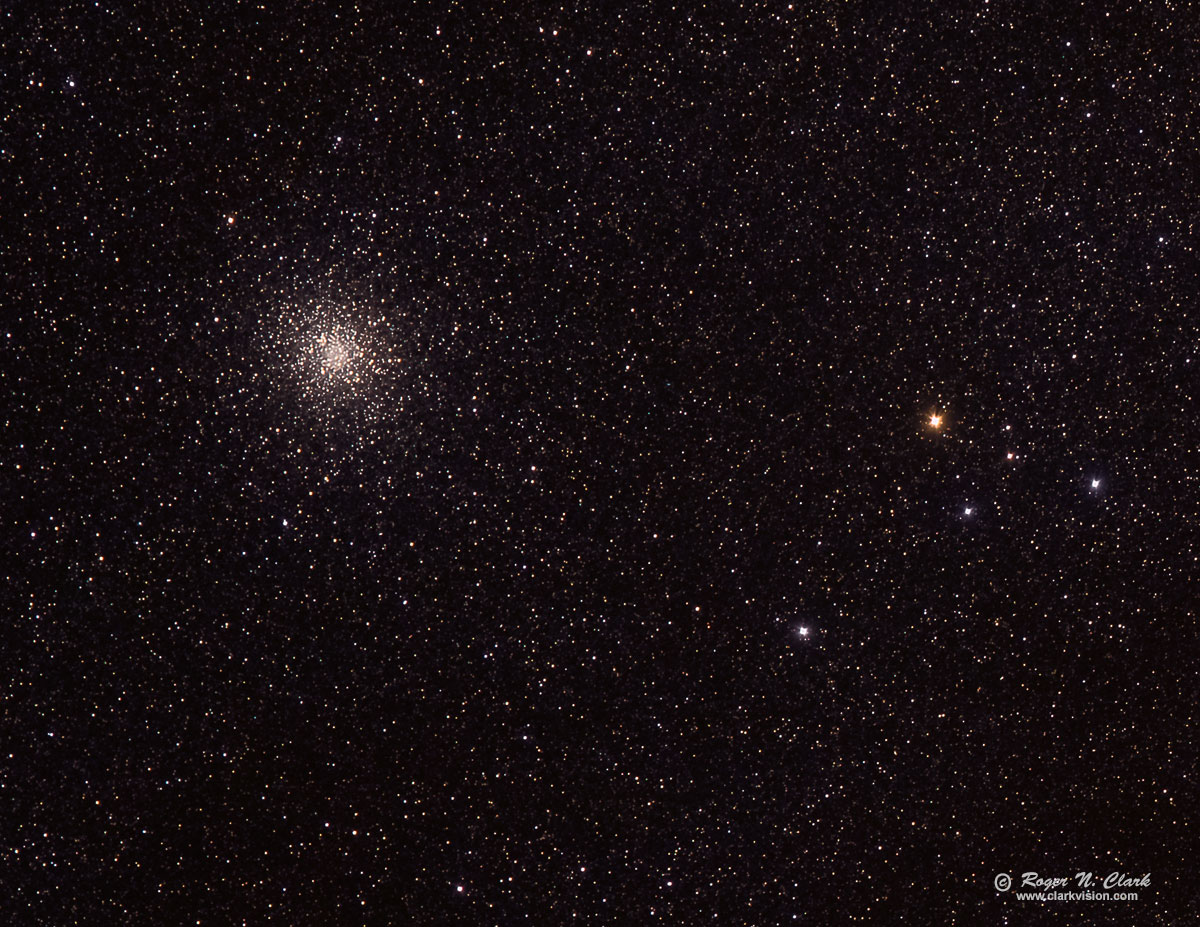| Home | Galleries | Articles | Reviews | New | About | Contact | Gallery Index | Previous |
Next |

| Home | Galleries | Articles | Reviews | New | About | Contact | Gallery Index | Previous |
Next |

One of the grandest globular clusters in the night sky, M22 is about 100 light years in diameter and a little over 10,000 light years away. Its apparent size is similar to the diameter of the Moon.
Technical. This image was obtained with a Canon 7D Mark II 20-megapixel digital camera and 300 mm f/2.8 L IS II lens plus a 1.4x teleconverter giving 420 mm at f/4 and ISO 1600. No dark frame subtraction, no flat fields. Tracking with an Astrotrac and no guiding. Only 10 minutes of total exposure (10 1-minute exposures).
The Exposure Factors, CEF, CEFA are measures of the relative amounts of light received from a subject. It can be used to fairly compare wildly different lens/telescope apertures and exposure times. For this image:
Modern DSLRs like the 7D Mark II include on sensor dark current suppression and low fixed pattern noise at ISOs around 1600 and higher, making no need for dark frame subtraction. Modern raw converters correct for light fall-off and also correct for hot/dead/stuck pixels. This makes processing low light images easy: simply align and average.
To learn how to obtain stunning images like this, please visit my Extensive Articles on Photography .
See my review of the Canon 7D Mark II and why it is so good for astrophotography: Canon 7D Mark II sensor analysis.
Keywords to this image = astrophoto-1 star_cluster Messier night low-light digital_astro canon_7d2 NEW
Image ID: m22-globular-cluster.c08.13.2015.0J6A5340-49--t2.c-c1-1200.jpg
| Home | Galleries | Articles | Reviews | New | About | Contact |
Last updated August 23, 2016